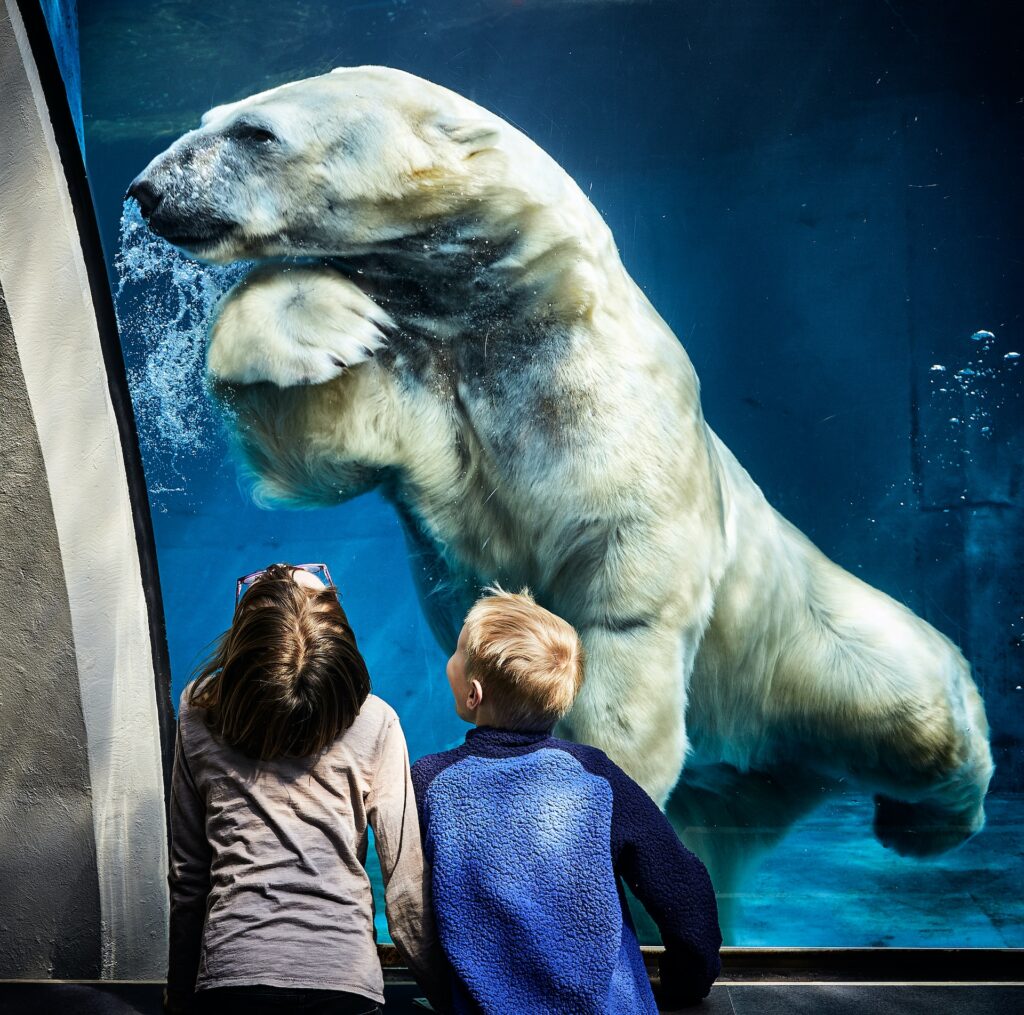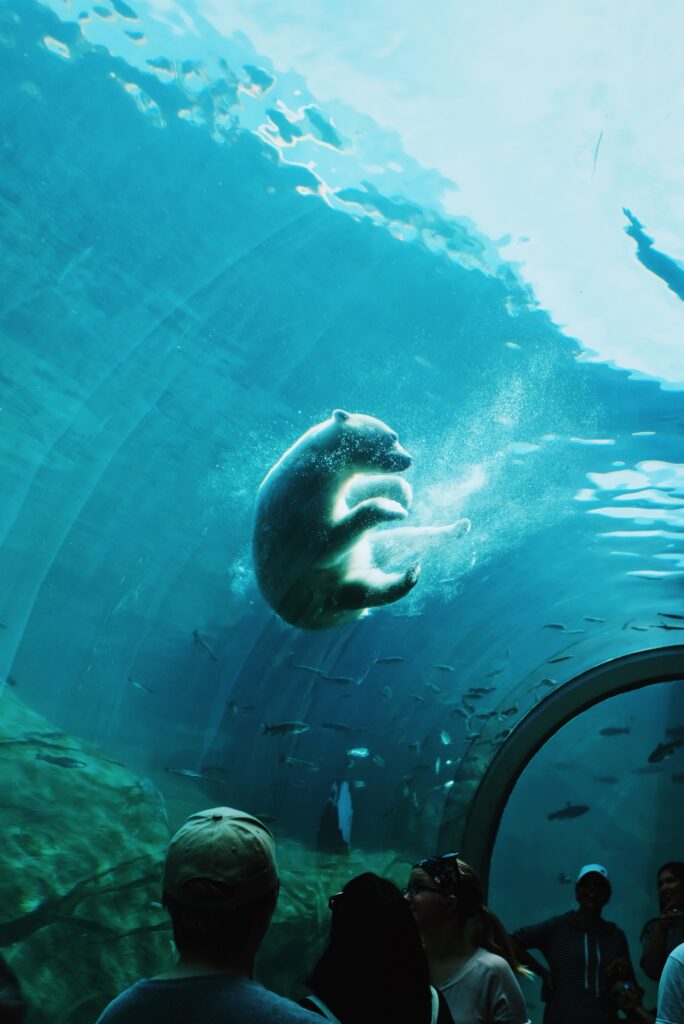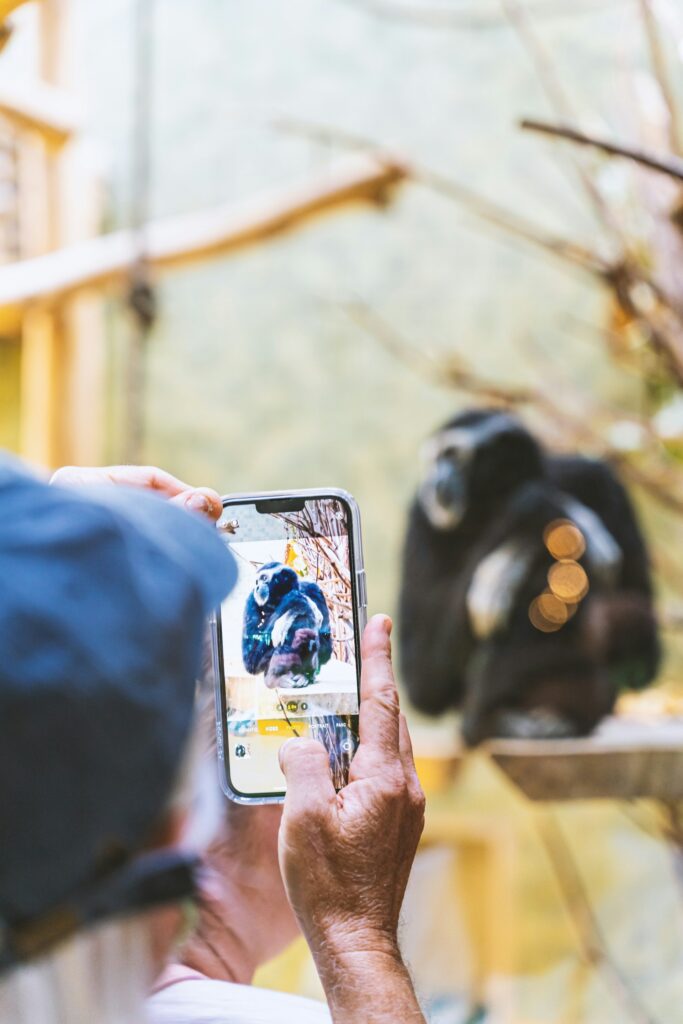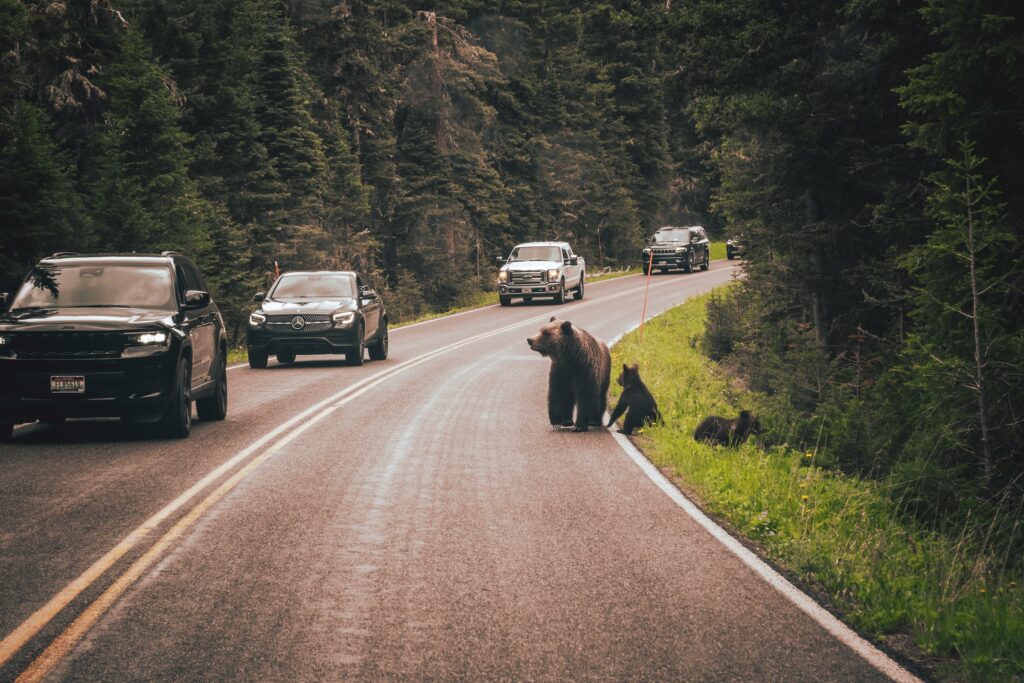In the enchanting world of zoos, there’s an unspoken connection between visitors and the animals that grace these renowned institutions. The mere thought of a visit to a zoo sparks excitement and curiosity. People from all walks of life gather, eager to witness the wonders of the animal kingdom up close, and for a brief moment, these creatures from distant lands become our neighbors.
Zoos, like miniature slices of the wilderness, open the door to a universe where extraordinary and often endangered animals roam. These zoological gardens offer us a chance to connect with creatures we may never encounter in their natural habitats, fostering a deep sense of respect, fascination, and sometimes even advocacy for wildlife conservation.
The Power of Visual Storytelling

Zoos captivate our imaginations and offer a unique opportunity for visual storytelling. The blend of animals, visitors, and the carefully crafted environments in which they interact creates a canvas for photographers and videographers to narrate captivating tales. Through the lens, the worlds of these animals and their human admirers merge, transcending geographical boundaries.
Famous Zoos as Unique Settings
To fully appreciate the art of capturing animals and visitors in zoos, it’s essential to recognize the distinctive features that make famous zoos such extraordinary settings.
A Glimpse into Renowned Zoos
Famous zoos scattered across the globe have their distinct charm. From the lush landscapes of the San Diego Zoo to the regal architecture of the London Zoo, each establishment boasts a unique backdrop for animal interactions.
The Appeal of Iconic Animals
Within the confines of renowned zoos, certain animals shine as celebrities. These creatures become the poster children of their respective institutions, drawing visitors from all corners of the world. Think of Mei Xiang and Tian Tian, the giant pandas at the Smithsonian National Zoological Park, or the charismatic penguins of Antarctica at the San Diego Zoo. These icons carry a special allure, and capturing their essence through a camera’s lens is both an art and a privilege.
As we delve deeper into this article, we’ll explore the dynamic interplay between visitors and animals, understand the ethical considerations that photographers and videographers face, and discover the strategies employed to capture these moments in a way that respects the animals’ well-being and natural behavior.
Through the coming sections, you’ll witness the fine balance between artistic expression and ethical responsibility that defines the art of capturing animals and visitors interacting at famous zoos. We’ll also address the influential role of social media, the educational value of shared experiences, and the controversies surrounding this captivating practice.
Photography and Videography in Zoos

The allure of zoos extends far beyond the realm of physical visits. Today, with advanced technology, anyone with a camera or smartphone can become an explorer, embarking on a visual journey to capture the beauty and essence of zoo animals and their interactions with visitors. Photography and videography in zoos have emerged as powerful tools for storytelling, conservation advocacy, and education. This section will delve into the ethical considerations surrounding this practice and the importance of preserving natural behavior in zoo animals.
Ethical Considerations
While photographing or filming animals in zoos is undeniably captivating, it is not without its ethical dilemmas. Zoos, even the most renowned ones, have faced scrutiny regarding animal welfare, privacy, and the potential stress that cameras can induce.
Animal Welfare
One of the most critical ethical considerations revolves around animal welfare. Although living in controlled environments, captive animals must be treated with the utmost respect and consideration. Photographing or filming animals nearby can sometimes cause stress or discomfort. The presence of lenses and flashes can disrupt their daily routines and even infringe upon their privacy. As responsible photographers and videographers, it’s imperative to prioritize the well-being of the animals. This often involves maintaining a respectful distance, following zoo guidelines, and recognizing signs of animal stress.
Animal welfare should always be at the forefront of every camera click or video recording. It is morally imperative to capture moments without causing harm or undue stress to these incredible creatures.
Privacy and Consent
In the digital age, where photos and videos can be instantly shared with millions of people, the notion of privacy also extends to animals. Captive animals may have moments when they wish to retreat from the limelight but have no say. This raises a significant ethical question: do zoo animals have a right to privacy and consent when photographed or filmed?
Respecting the privacy of animals means being aware of their cues and reactions. If an animal appears distressed, anxious, or agitated by the presence of cameras, it’s vital to exercise restraint and prioritize their comfort. Consent, in the traditional human sense, may not apply to animals. Still, it’s the ethical responsibility of the photographer or videographer to gauge the animal’s comfort and refrain from causing distress.
Preserving Natural Behavior
Capturing animals in zoos is not just about taking stunning photographs or shooting engaging videos; it’s also about preserving their natural behavior. One of the ethical cornerstones of wildlife photography and videography in zoos is ensuring that the animals’ actions and interactions mirror their natural tendencies.
Zoos play a pivotal role in wildlife conservation and education. They offer an opportunity for the public to connect with and learn about these fascinating creatures. Therefore, it’s essential that the content created through photography and videography accurately represents the animals in their most natural state.
Preserving natural behavior includes capturing animals engaging in activities they would perform in the wild. This may involve photographing a tiger exhibiting stalking behaviors, a parrot displaying its intelligence, or a playful interaction between primates. These moments offer a window into the animal’s world and educate the public about their unique behaviors and the importance of conserving their natural habitats.
Ethical considerations in photography and videography within zoos encompass the well-being and privacy of animals and the responsibility to capture their natural behaviors accurately. As we continue our exploration of the captivating world where animals and visitors interact at famous zoos, these ethical guidelines serve as a compass, ensuring that our photographic and videographic endeavors align with the principles of respect, conservation, and education.
Strategies for Capturing Memorable Moments

Photography and videography in zoos are not just about pointing a camera and pressing a button. They require a blend of artistry, patience, and technical skill to capture those truly memorable moments that tell a story. This section will explore photographer’s and videographers’ strategies to document the captivating interactions between zoo animals and visitors. This includes the importance of patience, keen observation, and the utilization of specific equipment and techniques.
Patience and Observation
One of the fundamental strategies for capturing memorable moments in zoos is the virtue of patience combined with keen observation. Unlike photographing in a studio where everything can be controlled, zoo settings are dynamic and unpredictable. The subjects, the animals, are free to move about as they please, and their behavior may change in response to various factors, including weather, time of day, or the presence of visitors.
Patience
Patience is the secret ingredient behind many remarkable wildlife photographs and videos. It means waiting for that perfect moment when the animal’s expression, movement, or interaction aligns with your creative vision. It also involves understanding that these moments may not occur on your schedule.
Successful photographers and videographers often spend hours, or even days, waiting for the right moment to unfold. This can involve being patient to capture an animal’s yawn, a playful interaction, or a majestic stride. The best shots are often the result of dedication and waiting for that fraction of a second when everything falls into place.
Observation
Keen observation is the twin of patience. It involves studying animal behavior, understanding their habits, and anticipating their actions. An observant photographer or videographer can predict when a lion may stretch, when a penguin might dive, or when a monkey may engage in playful antics.
Observation is essential not only to anticipate but also to respect an animal’s boundaries. It enables photographers and videographers to recognize stress or discomfort and adjust their approach accordingly. It’s a skill that comes with experience and a deep appreciation for wildlife.
Equipment and Techniques
The right equipment and techniques are vital for capturing those mesmerizing zoo moments. While it’s true that great photography or videography can be achieved with relatively simple equipment, specialized tools can provide a significant advantage.
Equipment
Cameras and lenses: High-quality cameras with interchangeable lenses allow for flexibility in framing and composition. Zoom lenses are particularly useful in zoo settings as they enable photographers to maintain a respectful distance from the animals while capturing detailed shots.
Tripods and stabilizers: These tools help ensure sharp and stable images, especially in low-light conditions. Tripods are particularly useful for videography to avoid shaky footage.
Techniques
Composition: Composing the shot is crucial. Techniques such as the rule of thirds, leading lines, and framing can create visually appealing and engaging photographs or videos.
Use of natural light: Taking advantage of natural light is key to capturing the beauty of animals. The golden hours of sunrise and sunset often provide the most stunning and warm lighting.
Patience with settings: Understanding camera settings such as shutter speed, aperture, and ISO is essential for capturing moving subjects and lighting conditions.
The strategies for capturing memorable moments in zoos encompass patience, observation, and the right equipment and techniques. Successful photographers and videographers understand that each moment is unique and requires dedication to achieve. By exercising patience and observation and utilizing the appropriate equipment and techniques, they preserve the essence of animals’ natural behavior and convey the magic of zoo interactions to the world.
Sharing the Zoo Experience

Visiting a zoo is more than just a casual trip; it’s an opportunity to embark on an educational and emotional journey that creates lasting memories. While zoos are incredible places of discovery and wonder, in today’s interconnected world, sharing the zoo experience has taken on new dimensions. In this section, we will explore the impact of social media on the portrayal of zoo visits and the educational value of shared content.
Social Media’s Influence
Social media has transformed how we share and experience life’s moments; zoo visits are no exception. Visitors can instantly capture their encounters with animals and share them with a global audience. The influence of social media on the way we perceive and engage with zoos is profound.
Instant Sharing
Social media platforms like Instagram, Facebook, and TikTok offer the perfect stage for zoo-goers to showcase their experiences. Visitors can upload images, videos, and stories in real time, allowing friends and followers to join them on their zoo adventure virtually. This instant sharing creates a sense of excitement and immediacy, drawing more attention to the wonder of the zoo.
Engagement and Connection
Social media allows zoo enthusiasts to connect and share their passion with like-minded individuals worldwide. Hashtags and online communities unite people who share a common interest in wildlife conservation, animal behavior, and the beauty of zoo animals. This sense of community fosters enthusiasm and a collective commitment to animal welfare.
The Educational Value
Beyond the entertainment and visual appeal, sharing the zoo experience through social media holds significant educational value. Each photograph, video, or caption can be a window into the fascinating world of wildlife, offering viewers a chance to learn and appreciate the diversity of our planet’s fauna.
Raising Awareness
Shared content from zoo visits often catalyzes raising awareness about wildlife conservation. The photographs and videos that go viral have the potential to shed light on endangered species, habitat destruction, and the challenges animals face in the wild. Through these shared moments, zoo visitors become advocates for the creatures they encounter.
Encouraging Conservation
Educational captions accompanying shared content can be powerful tools for conservation. They can inform the public about protecting endangered species and their natural habitats. Shared experiences at zoos inspire viewers to support conservation organizations, donate to wildlife causes, or even participate in field research.
Zoo websites and social media accounts themselves play a vital role in education. They often feature informative content about the animals, their biology, and conservation efforts. By following zoos on social media, individuals can stay informed about these matters and gain a deeper understanding of the animals they admire.
Sharing the zoo experience through social media has transformed how we engage with these institutions. It creates a sense of excitement and community and offers substantial educational value. The photographs, videos, and narratives shared during zoo visits can be powerful tools for raising awareness about wildlife conservation and encouraging positive action. As we continue exploring the world where animals and visitors intersect at famous zoos, we acknowledge the essential role that social media plays in shaping our understanding and appreciation of these remarkable places.
Challenges and Controversies
The enchanting world where visitors and animals interact at famous zoos has its share of complexities and ethical dilemmas. Addressing the challenges and controversies surrounding this practice is crucial as we’ve explored the wonders and artistry of capturing these interactions. In this section, we will delve into the concerns related to animal welfare and the questions of privacy and consent in zoo photography and videography.
Animal Welfare Concerns
The well-being of animals in zoos is a topic that has garnered significant attention over the years. Zoos, even the most renowned ones, have faced scrutiny regarding animal welfare, with concerns extending to the impact of photography and videography on the creatures within these confines.
Stress and Disruption
One of the primary concerns related to animal welfare in the context of photography and videography is the potential stress and disruption that these activities may cause. Despite being in controlled environments, zoo animals are still subject to the pressures of a captive life. The presence of cameras, photographers, and visitors can disrupt their routines and, at times, induce stress.
It’s vital for those engaging in photography and videography in zoos to prioritize the well-being of the animals. This may involve maintaining a respectful distance, following zoo guidelines, and recognizing signs of animal stress. A distressed animal is not only concerning from an ethical perspective but can also negatively impact the animal’s health.
Privacy and Consent
The idea of privacy and consent takes on a different form regarding animals. In the digital age, where images and videos can be instantly shared with a global audience, privacy extends to the creatures within zoos.
Right to Privacy
While animals may not have the same rights to privacy as humans, they exhibit behaviors and reactions that signify their need for space. Captive animals should be allowed moments of solitude, relaxation, and retreat from the gaze of onlookers. It is the responsibility of those with cameras to respect these boundaries.
Furthermore, the constant presence of cameras can infringe upon an animal’s right to privacy in their habitat, even if it’s a simulated one. It’s crucial to capture moments without causing harm or undue stress to these incredible creatures.
Consent
Consent, a concept firmly rooted in human ethics, may not apply to animals traditionally. However, understanding an animal’s comfort and gauging their consent is an ethical responsibility. If an animal appears distressed, anxious, or agitated by the presence of cameras, it’s essential to exercise restraint and prioritize their comfort.
Challenges and controversies surrounding the photography and videography of animals in zoos extend to animal welfare, privacy, and consent. Ethical considerations are critical in navigating the complex world where visitors and animals intersect. As we continue to explore the captivating interactions at famous zoos, we must remember the importance of respecting and preserving the well-being and boundaries of the animals we admire.
The captivating world where visitors and animals intersect at famous zoos is a realm of wonder, discovery, and, at times, ethical complexity. As we conclude our exploration of the art and impact of capturing these interactions, it’s essential to reflect on the multifaceted nature of this practice.
Photography and videography in zoos offer a unique opportunity to tell captivating stories, foster awareness, and ignite passion for wildlife conservation. However, this pursuit has its ethical considerations. The welfare of the animals in captivity, privacy, and consent must always be at the forefront of our actions.
Infamous zoos, each visit is a journey into the extraordinary. It’s an encounter with charismatic and often iconic creatures that have the power to connect us with the natural world. The photographs and videos created within these institutions can inspire change, raise awareness, and encourage a deeper appreciation of the diverse species that share our planet.
The ethical guidelines of respect, patience, and observation guide photographers and videographers in their quest to capture the moments that transcend the boundaries between species. By prioritizing the comfort and well-being of the animals, they create content that not only astounds but educates them.
In the digital age, social media’s power has reshaped how we share and experience the zoo. Every image, video, and story shared provides a window into the captivating world of wildlife. It fosters community, allowing individuals to connect, learn, and advocate for preserving our planet’s biodiversity.
However, as we share these experiences, we must also navigate the emerging challenges and controversies. Animal welfare concerns and questions of privacy and consent call for responsible and ethical actions.
In conclusion, the world of famous zoos, where visitors and animals intersect, is a place of inspiration, education, and sometimes, ethical questioning. The art of capturing these interactions is a delicate balance of artistry, ethics, and advocacy. It’s a testament to our commitment to understanding and conserving the remarkable creatures we share with this planet.
As we continue exploring this captivating world, we recognize that our actions have consequences and are responsible for ensuring that the animals we admire are respected, protected, and celebrated. The art of photography and videography in zoos becomes a means of honoring and preserving the splendor of the natural world for generations to come.








